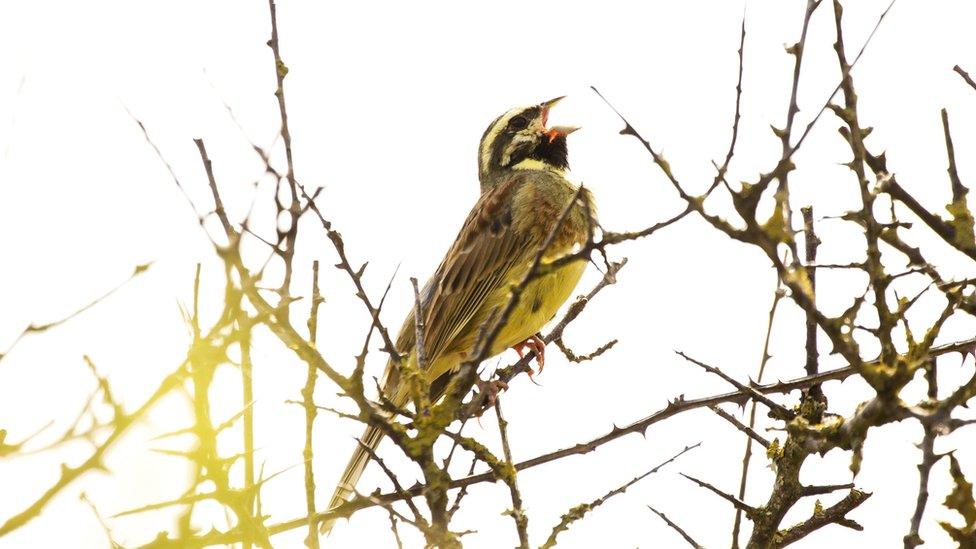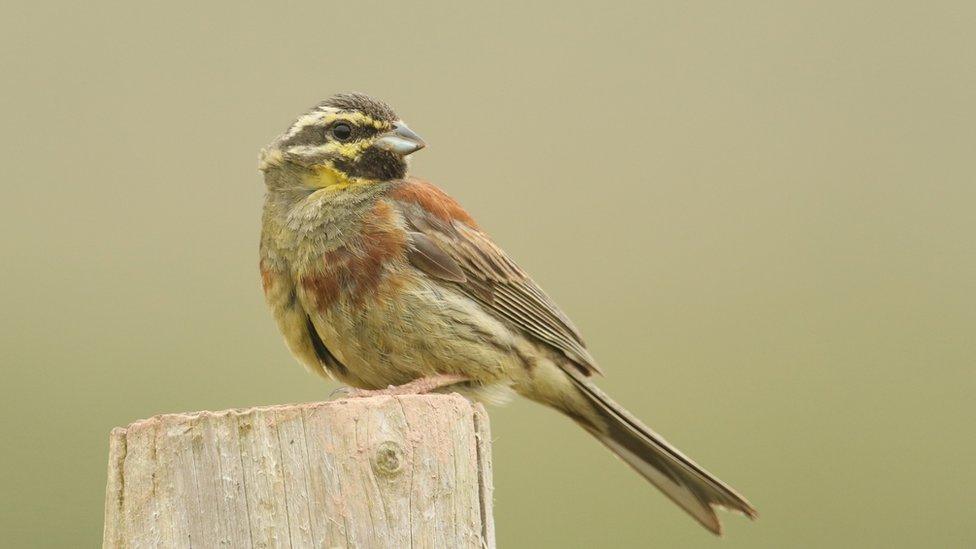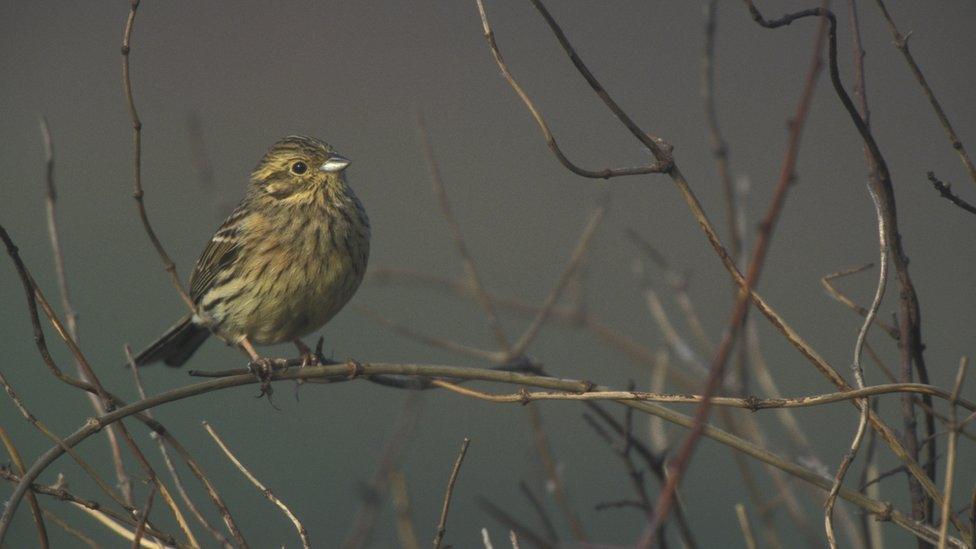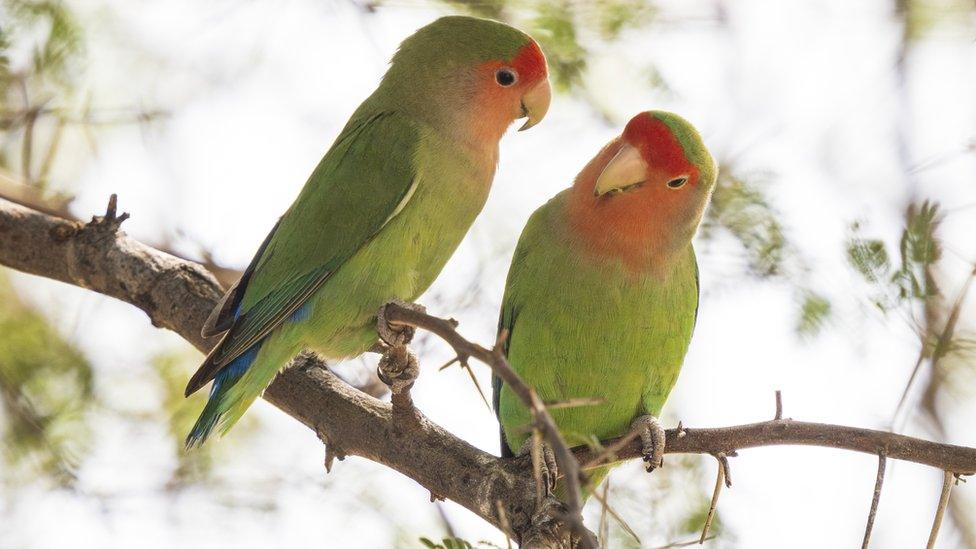Songbirds can learn new songs to communicate and survive
- Published
- comments

Songbirds have the ability to learn different songs to be able to communicate, according to a new study.
Much like humans have different accents and languages, songbirds of the same species also have differences in their songs depending on their location.
Sometimes moving an animal from one place to another is an important part of conservation efforts, and scientists wanted to see if this had a long-term impact on the birds.
They found that these birds can learn the songs they need to be able to communicate and survive in the wild.

The cirl bunting is a rare farmland songbird whose numbers have declined in the UK due to habitat loss
Researchers from the University of Plymouth, the Royal Society for the Protection of Birds (RSPB) and Manchester Metropolitan University looked at baby cirl buntings taken from sites in Devon, hand-reared, and then reintroduced in Cornwall.
When an animal is hand-reared it means a person has cared for it since it was very young, rather than its mother.
Cirl buntings are songbirds that need to learn their songs from adult birds.
But because the chicks were hand-reared before being reintroduced in Cornwall, they were never properly taught how to sing.

Cirl bunting are almost exclusively found in south Devon but conservationists have been reintroducing them to Cornwall
Recordings taken of the bird song in Cornwall in 2011 showed the songs from the population of cirl buntings was quite different to the original population in Devon.
They didn't sing as many song types and what the individuals were singing wasn't always correct.
Scientists weren't surprised by these findings as the nestling birds only had a CD with a single cirl bunting song played to them while being hand-reared.

These birds were once widespread across southern England but have been in decline since WWII and by 1989, there were fewer than 120 pairs recorded
When researchers returned to Cornwall in 2019, the songs were nearly the same as those in Devon.
The findings show that although things weren't quite right to start with, as the population increased in size over the next eight years, the population recovered its song.
A small population of cirl buntings are now thriving in Cornwall but these rare birds will continue to be monitored.
- Published3 February 2024

- Published1 February 2024

- Published24 January 2024

